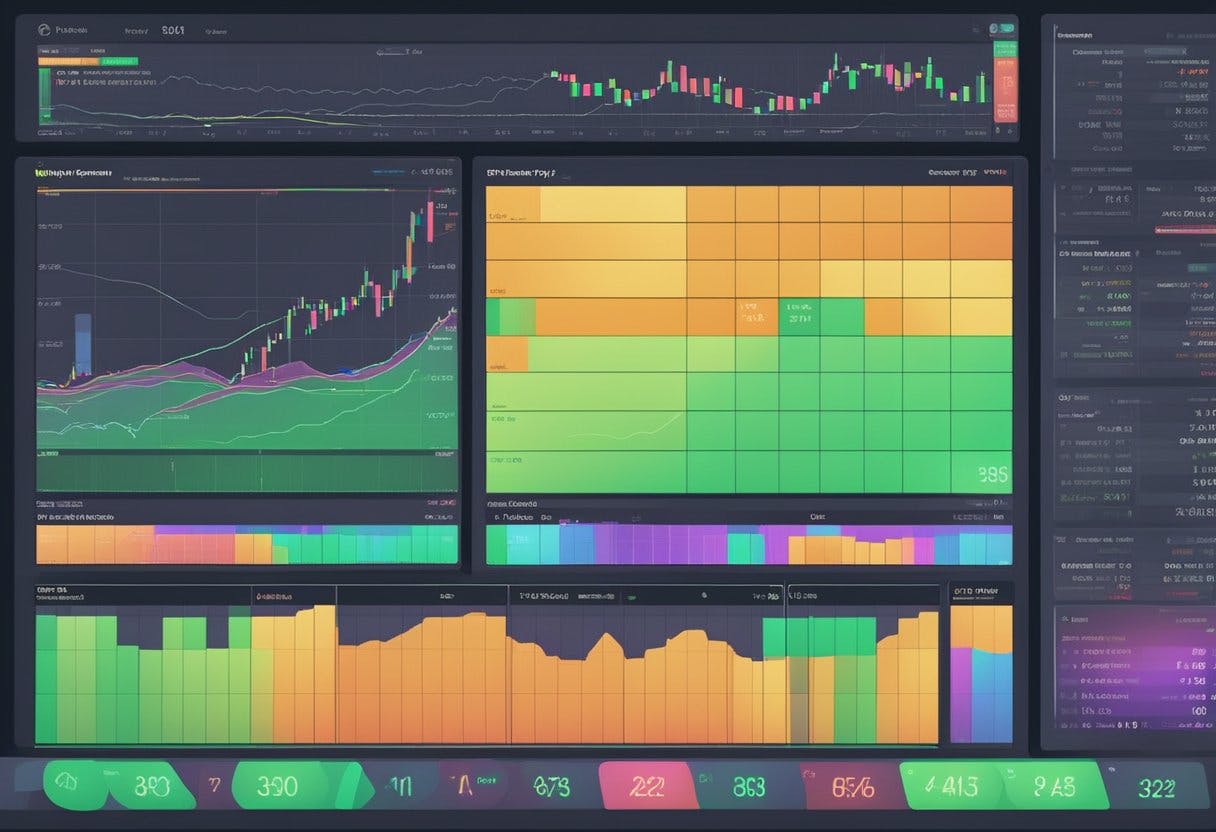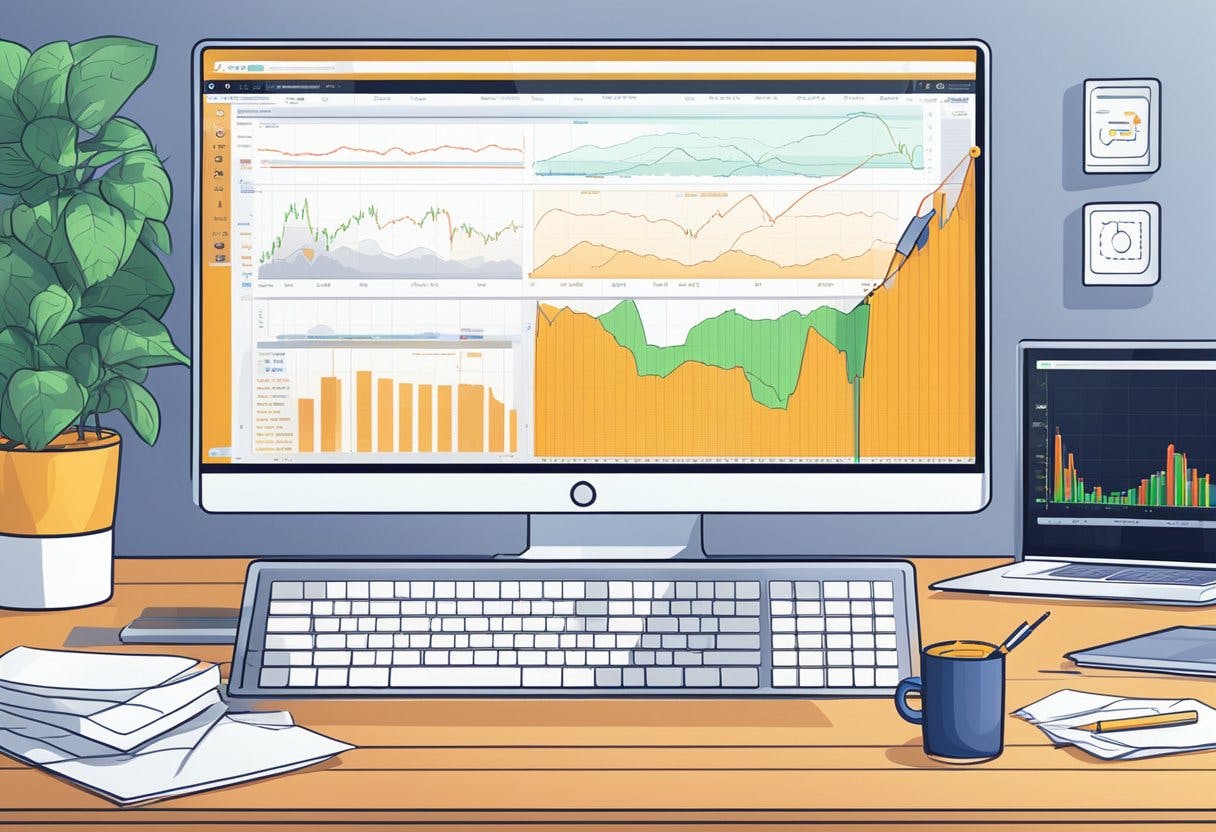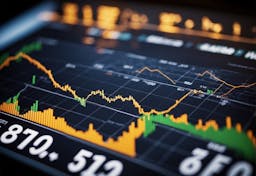
High leverage in crypto margin trading is a popular strategy used by traders to multiply their gains. It involves borrowing funds from a broker to increase the size of a trade, which can result in higher profits or losses. However, the use of high leverage in crypto margin trading comes with significant implications that traders need to consider before engaging in this strategy.

Understanding leverage in crypto margin trading is essential before considering the implications of using high leverage. Leverage refers to the use of borrowed funds to increase the size of a trade. In crypto margin trading, traders can borrow funds from a broker to increase their buying power and make larger trades. However, this also means that the trader is taking on more risk since they are trading with borrowed funds.
The risks and rewards of high leverage in crypto margin trading need to be considered carefully. While high leverage can result in higher profits, it can also lead to significant losses. Traders need to have a solid risk management plan in place to mitigate the risks associated with high leverage. Additionally, traders should be aware of the impact of leverage on market dynamics and regulatory and operational considerations that may affect their trading strategy.
Key Takeaways
- Understanding leverage in crypto margin trading is essential before considering the implications of using high leverage.
- High leverage in crypto margin trading can result in higher profits or significant losses.
- Traders need to have a solid risk management plan in place and be aware of the impact of leverage on market dynamics and regulatory and operational considerations.
Understanding Leverage in Crypto Margin Trading

Defining Leverage and Margin Trading
Leverage and margin trading are two fundamental concepts in the world of finance. In simple terms, leverage refers to borrowing funds to increase the size of a position in a particular asset. Margin trading, on the other hand, involves borrowing funds from a broker or exchange to trade assets with a higher value than the initial investment.
In the context of crypto trading, leverage trading is a popular method of trading that allows traders to borrow funds from exchanges or brokers to increase their buying power. This means that traders can open positions with a smaller initial investment than would be required for spot trading.
Comparison with Traditional Leverage Models
Leverage trading in crypto differs from traditional leverage models in several ways. In traditional markets, leverage is typically offered through futures contracts, which are standardized agreements to buy or sell an asset at a predetermined price and date in the future.
In contrast, crypto exchanges offer leverage through margin trading, which allows traders to borrow funds to increase their buying power. This means that traders can open positions with a smaller initial investment than would be required for spot trading.
However, it is essential to note that leverage trading comes with significant risks, particularly in the volatile world of crypto. While leverage can amplify profits, it can also amplify losses, and traders can lose more than their initial investment.
In conclusion, understanding leverage and margin trading is crucial for anyone looking to trade crypto. While leverage can increase buying power and amplify profits, it also comes with significant risks. Traders should carefully consider their risk tolerance and only use leverage when they fully understand its implications.
Risks and Rewards of High Leverage

When it comes to margin trading in cryptocurrency, the use of leverage can either amplify profits or lead to increased risk of liquidation. Here are the potential risks and rewards of high leverage in crypto margin trading:
Potential for Amplified Profits
Leverage is the ability to control a large position with a small amount of capital. This means that investors can potentially make larger profits than they would with their own capital alone. For example, if an investor has $1,000 and uses 10x leverage, they can control a position worth $10,000. If the price of the cryptocurrency they are trading increases by 10%, they would make a profit of $1,000 instead of just $100.
However, it is important to note that leverage works in both directions. If the price of the cryptocurrency decreases, the investor could potentially lose more than their initial investment.
Increased Risk of Liquidation
One of the biggest risks of using high leverage in crypto margin trading is the increased risk of liquidation. Liquidation occurs when the value of an investor’s portfolio falls below a certain level, and the exchange automatically sells their assets to cover the losses.
Using high leverage means that the investor’s portfolio is more vulnerable to price fluctuations, and they could be liquidated more quickly. This is because the exchange will start selling their assets at a lower price to cover the losses, potentially causing a chain reaction of further price drops.
To avoid liquidation, investors should use appropriate risk management strategies, such as setting stop-loss orders and using lower leverage ratios.
Overall, the use of high leverage in crypto margin trading can lead to amplified profits, but also carries increased risk of liquidation. It is important for investors to understand these risks and rewards before using leverage in their trades.
Risk Management in Leverage Trading
Leverage trading in cryptocurrency can be highly profitable, but it can also be extremely risky. For this reason, it is essential to have a solid risk management plan in place before engaging in leverage trading. Proper risk management can help traders control their losses and maximize their profits.
Importance of Stop-Loss Orders
One of the most important risk management strategies in leverage trading is the use of stop-loss orders. A stop-loss order is an order to sell a cryptocurrency at a predetermined price. This can help limit losses in the event of a sudden market downturn. By setting a stop-loss order, traders can protect their equity and minimize their risk exposure.
Effective Position Sizing
Another key component of risk management in leverage trading is effective position sizing. Position sizing refers to the amount of capital that a trader allocates to each trade. It is important to carefully consider the leverage ratio and the potential risk associated with each trade before entering a position. Traders should avoid over-leveraging and should always maintain a sufficient amount of equity to cover potential losses.
Diversification as a Strategy
Diversification is another important risk management strategy in leverage trading. By diversifying their portfolio, traders can spread their risk across multiple assets, reducing their overall risk exposure. This can help protect against sudden market downturns and limit potential losses.
In summary, risk management is a critical component of successful leverage trading in cryptocurrency. By using stop-loss orders, effective position sizing, and diversification as a strategy, traders can minimize their risk exposure and maximize their profits.
Impact of Leverage on Market Dynamics
Leverage is a powerful tool that can amplify profits or losses in crypto margin trading. It allows traders to increase their exposure to the market by borrowing funds from a broker. However, high leverage can also lead to significant risks and volatility in the market.
Market Volatility and Leverage
Leverage can magnify both gains and losses in the market. When the market moves in favor of a leveraged position, the profits can be substantial. However, when the market moves against a leveraged position, the losses can be devastating.
The use of leverage can also increase market volatility. As more traders use leverage to enter the market, the demand for assets can increase, leading to higher prices. Conversely, as more traders use leverage to exit the market, the supply of assets can increase, leading to lower prices.
Influence on Asset Prices
The use of leverage in crypto margin trading can also have an impact on asset prices. When traders use leverage to buy assets, the demand for those assets can increase, leading to higher prices. Conversely, when traders use leverage to sell assets, the supply of those assets can increase, leading to lower prices.
The impact of leverage on asset prices can be particularly significant in the derivatives market. Derivatives are financial instruments that derive their value from an underlying asset, such as Bitcoin or Ethereum. The use of leverage in derivatives trading can amplify the impact of market movements on the underlying asset, leading to increased volatility and price swings.
In conclusion, the use of leverage in crypto margin trading can have significant implications for market dynamics. Traders should carefully consider their leverage ratio and risk management strategies before entering the market. While leverage can amplify profits, it can also lead to significant losses and market volatility.
Regulatory and Operational Considerations
When it comes to crypto margin trading, regulatory and operational considerations are crucial. This section will discuss two important aspects of these considerations: exchange policies and leverage limits, and the legal framework and oversight.
Exchange Policies and Leverage Limits
Crypto exchanges have different policies and leverage limits when it comes to margin trading. For instance, Binance offers a maximum leverage of 125x, while FTX offers up to 101x leverage. Bybit, on the other hand, offers up to 100x leverage for its perpetual contracts. These exchanges also have different initial margin and maintenance margin requirements.
It is important for traders to be aware of these policies and limits before engaging in margin trading. They should also ensure that they have sufficient funds to cover the initial margin requirement and maintain the maintenance margin level to avoid liquidation.
Legal Framework and Oversight
Crypto margin trading is a relatively new concept, and there is currently no comprehensive legal framework governing it. However, some countries have started to regulate crypto margin trading. For instance, the National Futures Association (NFA) in the United States has imposed stricter rules on crypto margin trading.
Exchanges that offer margin trading are also subject to regulatory oversight. For instance, Binance has faced regulatory scrutiny from various countries, including the United States and the United Kingdom. It is important for traders to be aware of the regulatory environment in their jurisdiction and the exchanges they use.
In conclusion, traders should consider exchange policies and leverage limits, as well as the legal framework and oversight, when engaging in crypto margin trading. They should also ensure that they have a good understanding of the risks involved and have sufficient funds to cover the initial margin requirement and maintain the maintenance margin level.
Frequently Asked Questions
What are the potential financial risks when engaging in high leverage margin trading with cryptocurrencies?
High leverage margin trading in cryptocurrencies can be highly risky. With high leverage, traders can quickly lose their entire investment, and even more, if the market moves against them. The potential financial risks of high leverage margin trading include significant losses, margin calls, and liquidation of positions.
How does high leverage affect the probability of a margin call in cryptocurrency trading?
High leverage increases the probability of a margin call in cryptocurrency trading. Margin calls occur when the trader’s account equity falls below the required maintenance margin. With high leverage, traders can open larger positions with less capital, but this also means that their positions are more sensitive to market fluctuations. If the market moves against them, the trader’s equity can quickly fall below the required maintenance margin, resulting in a margin call.
What should traders consider when choosing leverage levels on crypto margin trading platforms?
Traders should carefully consider their risk tolerance, trading experience, and market knowledge when choosing leverage levels on crypto margin trading platforms. Higher leverage levels can provide greater potential profits, but they also increase the potential for significant losses. Traders should also consider the volatility of the cryptocurrency market, as well as the fees and charges associated with using leverage.
How does using extreme leverage like 1000x impact the stability of a crypto trading strategy?
Using extreme leverage like 1000x can significantly impact the stability of a crypto trading strategy. High leverage increases the risk of significant losses, and extreme leverage can amplify these losses even further. Traders who use extreme leverage may find that their positions are quickly liquidated, resulting in significant losses.
What are the common mistakes traders make when using high leverage in crypto trading?
Common mistakes traders make when using high leverage in crypto trading include over-leveraging, failing to set stop-loss orders, and ignoring risk management strategies. Over-leveraging can quickly lead to significant losses, while failing to set stop-loss orders can result in unlimited losses. Ignoring risk management strategies can also lead to significant losses, as traders may not be prepared for unexpected market movements.
How do regulatory frameworks impact the use of high leverage in crypto margin trading within the US?
Regulatory frameworks can impact the use of high leverage in crypto margin trading within the US. The Commodity Futures Trading Commission (CFTC) regulates the use of leverage in cryptocurrency trading, and traders must comply with its rules and regulations. The CFTC has set limits on leverage levels for retail traders, which can help to reduce the potential risks associated with high leverage margin trading.
Read More




